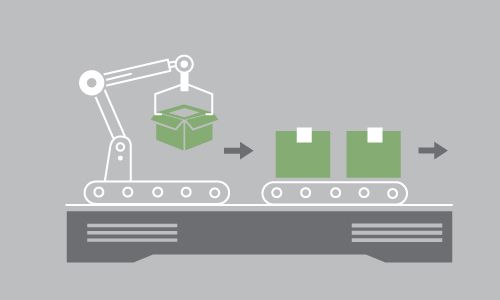Packaging is one of those ubiquitous industries. Few industries can say that every single American uses their products multiple times per day. Packaging protects, markets, stores, and maintains product quality for everything from food to pharmaceuticals, auto parts to alcohol, and cosmetics to cannabis and CBD.
Knowing this, innovation in packaging is constant. Hygienic designs, robotic automation and improved inspection—innovation is here that will make processes faster, more flexible, and more reliable.
Pack Expo Shows Off What’s Coming to Packaging
This innovation was on display at Pack Expo Las Vegas, where over 2,000 exhibitors from nearly 130 countries showed off their wares to attendees in late September.
Whether it was improving form/fill/seal or labeling, displaying new shapes or materials, leveraging new technologies, or shrinking existing technology, Pack Expo Las Vegas showed off the future of packaging and packaging operations. What can you expect? A recent article in Packaging Digest shared a few of their writers’ favorites:
Faster and More Flexible Processes for Flexible Packaging:
Pouches have become incredibly popular as the flexible packaging industry has become more prevalent. Companies are turning to pouches for a variety of reasons; the packages are lightweight, easy to ship and store, and are able to stand on shelves. Those serving the packaging industry have taken note and have introduced machines to speed up the process, reduce waste, and fill a growing range of package sizes.
Cartoning Gets Faster and More Visible
No matter what you make, many products are still shipped or stored in a carton. Whether that’s a carton ready to hit store shelves or one that will end up in a customer’s pantry, cartoning is still a necessary process for storing single-serve products or frozen foods. Luckily, manufacturing products are making it easier to cut down on changeover time while incorporating vision technology.
Smarter QA
Maintaining the quality of the products you pack is necessary. Errors happen, and the goal is to prevent any mistake from leaving your facility. There are many things you need to check for and many ways the QA process is improving.
- Smarter Leak Detection: Leak detection has become important for many packaging companies—especially those who use modified-atmosphere packs and flexible containers. The process of detecting leaks can help reduce testing waste and minimize risk while doing so in a reliable, cost-effective, and non-destructive way.
- AI Print Inspection: Inspecting print quality on a package was long considered a challenge. While traditional vision inspection typically requires fixturing with an edge or logo, new products are leveraging optical character recognition and artificial intelligence to learn what to look for on each package. This greatly reduces processing time and increases repeatability.
- X–Ray Machines Become More Compact and Easier to Use: X-Ray technology has been a big part of the QA process, identifying deviations within a product including glass, metal, stones and rocks, some plastic and rubber compounds, calcified bones and other foreign bodies. However, these machines were long considered bulky and hard to clean, but trends are pointing toward smaller machines that facilitate sanitation.
With the Pack Expo in the rearview and MinnPack taking place next month, it’s an exciting time to be in the packaging industry and even more exciting to learn about what’s next.
However, while you’re out looking at new technology, it’s important that you never lose sight of the basics. Sustainable packaging only goes so far if you find yourself at odds with the EPA or activists.
Don’t Lose Focus of the Basics: Pollution Control for the Packaging Industry
The packaging world continues to evolve to meet the needs of those who need it. Innovations happen at a breakneck pace, and they happen for a variety of reasons. Consumer preferences, shelf space demands, sustainable packaging expectations, it’s a consistently changing market.
Yes, you need to stay ahead of the trends in the packaging world; yes, embracing new changes before your competitors could improve your business results; and yes, leveraging new technology could improve the attractiveness, reliability, and even safety of your products.
However, while innovation is important, you can’t forget the basics. Concerns over the environment, food waste, or logistics have likely pushed you to change or reduce materials already, but also could affect your processes.
Often, a change to material requires a change of printing, coating, laminating, or cleaning products and processes, potentially exposing your facility to different environmental risks. Even if you haven’t made a significant change to your materials, you may notice that your pollution control abatement system may have aged and become less effective.
At the CMM Group, we have worked with companies both in the printing and packaging industries throughout our existence and know how to design, manufacture, and deliver a solution to minimize VOCs and other forms of air pollution. Not only that, we’ve embraced our own far share of innovation over the years, making pollution control even more efficient and cost effective for our customers. Read our case studies, download our guide to VOC abatement and contact us to learn more.




